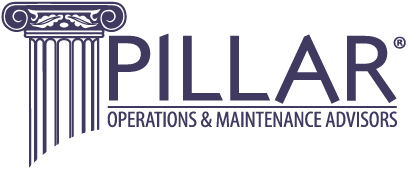If it’s too good to be true, it probably is.
Beware of any proposal that doesn’t spell out target accuracy requirement details and is coupled with a lower price. You may be left with inaccurate data that will cost you much more down the road, opening you up to costly change orders. A responsive and responsible bidder will always clearly spell out how they plan to meet target accuracy requirements so you can make an informed decision.
Many bidders will try to confuse proposal reviewers and prey on their lack of technical training. They take advantage of reviewers who aren’t familiar with the difference between RTK/PPK correction or absolute accuracy and relative accuracy. By using a lot of buzzwords and citing equipment accuracy tolerances, they hope to convince you that a surveyor, validation/check, and control points aren’t necessary to prove accuracy. You may read the proposal and believe that utilizing a scanning vehicle equipped with an IMU, GNSS, wheel encoders and a DMI to prevent drift and self-correct will be within accuracy requirements.
Sometimes you want the data accurate down to the inch and sometimes positioning within a few feet is acceptable enough for crews to locate an object in the field. Today’s mobile LiDAR equipment is powerful and allows us to do amazing things when it comes to location and accuracy. However, any specified accuracy still needs to be checked or verified.
How to Think About Point Cloud Accuracy
Imagine you walk into a dark warehouse (Point A) and need to get to a door on the other side (Point B). If the lights were on, this would be a simple task. You can see where you’re going and walk toward the door. With the lights out, the task becomes more complicated. You’ll likely unintentionally drift off course between Point A and Point B. When you get to the other side, you’d be unable to report how straight your path was let alone if you are even at the door, until you turn on the lights and adjust your position to the door.
Now imagine you’re in the same dark warehouse, but now you have familiar objects like a table, chair, or desk you can tap as you pass by. You’re much likelier to find the door by checking your position as you go. This method allows you to correct your course along the way and ensures that you actually are where you think you are.
Now imagine you’re in the dark warehouse with a dusty floor and your familiar objects, but also notches in the floor every so often marking the path. You get to the other end, turn on the lights and can see the path you took. The notches on the floor allow you to measure the distance between your footprints and your target path to check your accuracy and validate how close you were to following the path. Without those notches in the floor, you can’t validate your accuracy because you have nothing to measure against to verify or validate specified tolerances.
This is why it is necessary to tie mobile LiDAR scans to surveyed control points when a target accuracy is specified. Control points make it possible to correct positioning and adjust the recorded course to match the real-world course, just as tapping a known object as you walk through the darkened warehouse allows you to adjust your trajectory to the door. Furthermore, validation points allow you to verify that your data falls within the specified accuracy threshold. Without validation, asserting that the data is accurate would be impossible.
Applying surveyed control and validation points to your mobile LiDAR data is like walking across the darkened warehouse, with your path lit by tiny lights that guide your way. You may not be able to see your entire environment, but you have enough reliable information to arrive at your goal.
Poor GNSS Signal and Accuracy Challenges
Absolute Accuracy vs. Relative Accuracy are must-know terms for anyone evaluating an RFP.
- Absolute accuracy refers to whether or not objects in the point cloud fall near their actual location in the real world. This is sometimes referred to as “accuracy.”
- Relative accuracy refers to whether or not objects within the same point cloud lie in true positions relative to one another and if the object occupies the same location in multiple passes. This is sometimes referred to as “precision.”
Ideally, data should be both accurate and precise. To achieve this, professionals often use RTK (real-time kinematic) and PPK (post-processed kinematic) technologies to correct raw GPS data and achieve centimeter-level positional accuracy. However, this technology is contingent on a strong signal at the site from one or more GNSS constellations, as this raw satellite data forms the basis of your data corrections.
Professionals commonly utilize data from base station networks like CORS (Continuously Operating Reference Stations), operated by NOAA, or from subscription base station networks to perform RTK/PPK corrections. These networks are comprised of base stations situated atop points of known position and/or elevation. These base stations monitor GNSS signals from various constellations to:
- determine how inaccurate the GNSS calculated position is and
- determine an appropriate correction.
This correction can then be applied to your mobile LiDAR trajectory within a reasonable distance of the base station. Thus, an RTK/PPK corrected position will be more accurate than the raw GNSS calculated position. However, these corrections only apply to data received from the GNSS satellite constellations. They offer no benefit in situations where the GNSS signal is significantly blocked, as is the case in heavy canopy, urban canyons, or any area with a significant portion of the sky obscured.
It should be noted that, with respect to mobile LiDAR scans, these corrections alone are not sufficient to claim any particular accuracy. Additional steps are therefore necessary in order to validate and report the accuracy of the resulting point cloud.
Trajectory, Control, and Validation of Your Point Cloud Data
The three warehouse examples emphasize the three phases of point cloud data location and accuracy that are easy to confuse.
- PPK/RTK corrections from base station data (i.e. CORS). This phase helps correct errors in the position based on the GNSS signal and are provided by base stations operated from known locations. These stations don’t actually have to be within the survey area, just within a reasonable distance (usually a couple dozen kilometers, though this is dependent on terrain and other field conditions). This correlates to the first warehouse example where you need to correct errors in your overall path as a whole (trajectory).
- Control Points. These are surveyed points within the data collection area that are visible in the data and can thus be used to anchor the data to a known datum. In other words, they are used to adjust the data to its correct real-world position. Control points will help correct errors arising from the local environment or the mobile LiDAR scanning unit itself. This correlates to the second warehouse example where you are touching objects as you move through the warehouse. It’s useful in cases where you need to correct errors from the ground within the bigger picture and tie it to the ground.
- Check Points. These are surveyed points within the data collection area that are visible in the data, but they are not used to adjust the data, only to measure the offset of the location of the data to its real-world position. Check points are for reporting accuracy and verifying the data. This correlates to the third warehouse example where you have notches in the floor (i.e., a known real-world position) and are comparing them against the footprints on the dusty floor tracking your location (point cloud position). This validates that all remaining errors are within acceptable limits.
How does this all work and interrelate? #1 is frequently used on its own if there is no accuracy requirement. If there is an accuracy requirement, the only way to prove that the requirement has been met is with #3. However, there’s a good chance that in areas of poor GNSS reception (heavy tree canopy or blocking mountain faces), #1 will not be sufficient to meet accuracy requirements, so #2 would need to be used in those areas as well. It wouldn’t ever make sense to use #2 without #3, because #2 takes a lot of effort and you would certainly want to prove that #2 has worked. An important note, no single point should ever be used as both #2 and #3.
Work with a Responsive and Responsible Bidder
Some bidders may assert that you don’t need to set control points or validation points and can save lots of money. The problem is that by doing this, they aren’t responding to your accuracy requirements and therefore are not a responsive and responsible bidder. No accuracy can be demonstrated without a comparison to known, real-world positions (validation points).
A solid proposal will tell you the number of validation points it will take to verify that your data meets accuracy and how and where these points—and any necessary control points—will be established.
PILLAR prides itself on our commitment to quality and accuracy. We utilize cutting-edge technology, including mobile LiDAR, alongside over a century’s worth of combined expertise to be a partner you can rely on. Contact PILLAR today to learn more about how we can assist you with your next project.

